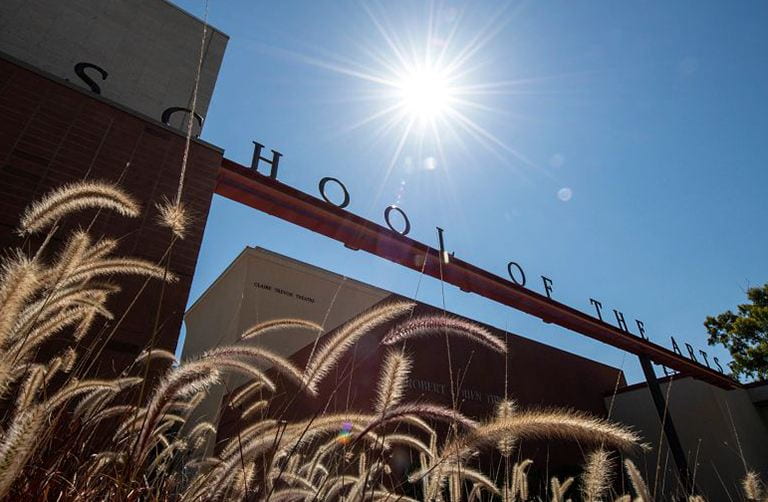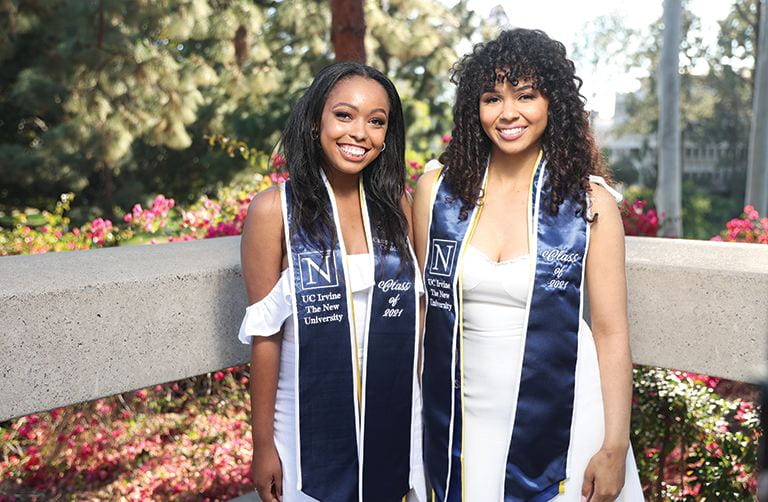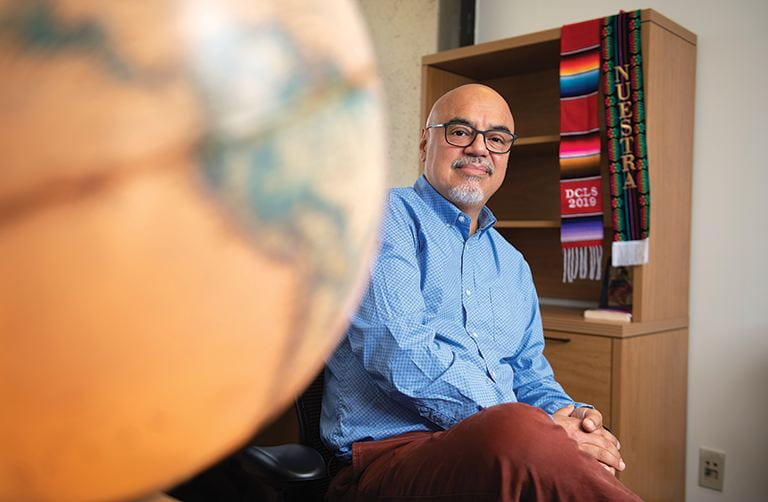Change as a Constant
Students and recent grads use the arts to express themselves and move society
Originally published in fall 2021 issue of UCI Magazine
Two artists with unique and personal responses to pandemic isolation and climate change. A stage manager who is striving to get more persons of color behind the scenes in the theater. A dancer expressing her Mexican American heritage through movement. A playwright doing everything but writing plays – for now – to document the identity of Chinese immigrants. A pianist/composer who uses his keyboard to say what words can’t.
These are just some of the remarkably varied lot of creative changemakers who continually emerge from UCI’s Claire Trevor School of the Arts. From the provocative and slightly bullet-riddled performance artist Chris Burden in the 1970s to the present-day crop of CTSA graduates, UCI has never lacked for those who question the status of the status quo.
According to CTSA Dean Stephen Barker, who began teaching at the school in 1987, change is a constant there.
“It’s a central goal of the Claire Trevor School of the Arts to encourage our students to be change agents in the world,” he says. “Art’s role, back to the very beginning of cave drawings, has been a double one: to be a mirror of the culture around it and also be a continual disrupter of that culture – to stretch our imaginations, to show what we can become.”
Barker says such a role has never been more important than it is today.
“The COVID shutdown has only exacerbated a situation already very prevalent around the world, which is a new kind of isolation,” he says. “People are feeling separated and divided from everybody else and from their culture – and that their access to influence their culture is regressing. Our citizen artists are there to speak for those who don’t have a voice, to ask ‘Is this really the way we want to be?’ and to suggest other ways of being.”
Ivy Guild, M.F.A. ’21 | Art

The title of Ivy Guild’s master’s thesis project, “The Keeling,” refers to our society keeling over when faced with climate catastrophes and an enduring pandemic, as well as the Keeling Curve, a scientific graph of carbon dioxide in our atmosphere.
Among the more striking images in her thesis exhibition in August at the CTSA Contemporary Arts Center were decayed, human-height South African aloe plants (harvested from the UCI Arboretum) held upright by ungainly metal appendages.
One of the things her organic/manufactured artworks represent is her own body.
“I had a lot of injuries playing sports as a kid,” Guild says. “We just assumed I was a klutz until, in my teens, it was discovered that I was born with split tendons in my ankles, loose joints and other genetic malformations, leading to several reconstructive surgeries.
“I’ve got six screws, two metal plates, five anchors, an internal brace and a piece of horse heart,” she continues. “So I do feel an affinity with these aloe and metal creations.”
If human invention has enabled her to function and could imbue the dead plants in her “speculative fabulation” (her term for science fiction) exhibition with a reimagined sense of life, Guild says, “maybe we can create an imaginative space in which people reconsider their relationship with our environment and get everybody on board to change what is fast becoming an existential crisis at our doorstep.
“I think art is a record of our culture, a sign of where we’ve been, where we are and where we’re going. It’s meant to provoke thoughts, emotions and, occasionally, vivid responses from the people who view it. And maybe that’s where change begins.”
Adam Kormondy ’21 | Music and Philosophy
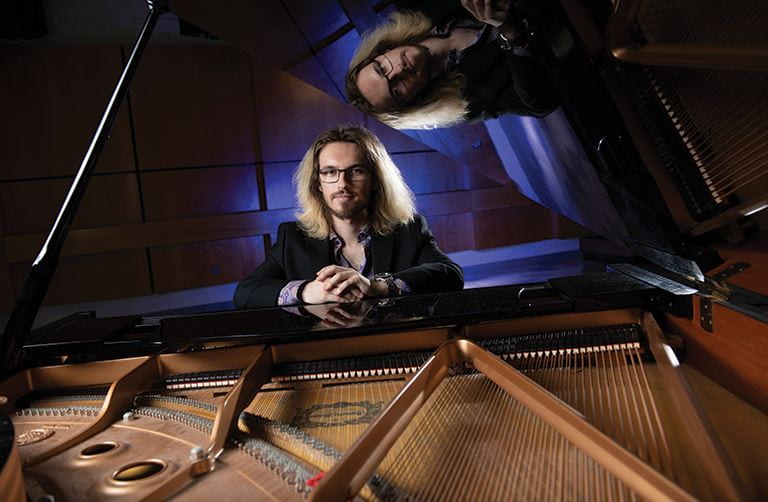
When he was 6 years old, Adam Kormondy had a profound emotional response to his first piano lesson, recalling now that “I despised it so much I actually cried.”
How things change: Kormondy recently sat at a CTSA rehearsal hall’s grand piano, which he hadn’t touched since before the pandemic began, and became so engrossed in improvising a lengthy reverie on it that he seemed oblivious to anything else around him.
After overcoming his childhood pianophobia, Kormondy spent his youth studying classical music and then, in his teens, was wooed by the freedom of improvisational jazz. His playing style and recent compositions (some on his album, “Eclipse,” released under the nom de plume Albion Kristof) reflect a melding of those genres.
It’s all instrumental music. Kormondy says one thing he learned from his parallel major in philosophy is that “there are aspects of the human experience, like love, that language doesn’t really convey. You want to know what love is? Go listen to Bill Evans play ‘My Foolish Heart.’
“When I write a piece of music, it’s usually me trying to work through feelings or questions that words don’t answer. The ultimate goal is to always try to take my music somewhere better and farther along, which is also what I’d want a listener to get from it: the inspiration to strive for a better world via their own creativity and goals.”
It’s his plan to see how he fares in the music field for a few years, but Kormondy hopes to someday return to UCI to seek a graduate degree in composition, saying, “Every professor I’ve had here challenged my assumptions and opened my eyes to new ways of thinking about music. I don’t think I’ll ever be so accomplished that I wouldn’t benefit from that.”
Eugenia Barbuc, M.F.A. ’21 | Art

A projected blue sky appears on one of the screens of Eugenia Barbuc’s multifaceted thesis exhibition, titled “Transfer &&, & Reassembled,” recently housed at the CTSA’s Room Gallery. Soon the sky is overlaid with doodles of different hues and sizes, appearing to be the work of different hands, which indeed they are. Amid the pandemic distancing and societal fracturing of the past 18 months, Barbuc chose to make aspects of the exhibition into a ludic oasis of cooperation.
“In a time where it was so difficult to manage in isolation, it became really imperative for me to reach out and work with fellow artists to de-center an individual narrative or sense of authorship and move toward collaboration and coalition-building, even if it had to be done online,” Barbuc says.
As for what an observer might get from it, the artist says: “I never like to create a closed-off reading of what something might mean. In this case, I just hope it shares a sense of cooperative openness, warmth and generosity.”
Barbuc has engaged with art since childhood, explaining, “I was kind of a shy kid and didn’t really talk a lot. I guess I used drawing and painting to make the world make sense and to create my inner worlds, as well as a way to communicate.”
Can art prompt change? Says Barbuc: “I see what art does as less a source of change so much as it’s an exchange, an open dialogue and a process that has no real goal other than to be a source for meditation and an exchange of thoughtfulness. But, that said, experiencing and making art has definitely changed and shaped my life, providing opportunities for agency and choice and experimentation and play. It has shaped the way I approach the world and others.”
Avery James Evans, M.F.A. ’22 | Stage Management

What does a stage manager do? A whole lot of everything, to hear M.F.A. student Avery James Evans tell it: The manager is the first to show up at the theater and the last to leave, from the initial rehearsal until the run’s final curtain. During every performance, the manager is calling the shots via headset to the backstage, lighting, props and sound crews; making the show run like clockwork; and, when it doesn’t, improvising solutions.
But, Evans says, one thing a stage manager can’t do so handily, if he or she is a person of color, is get a foot in the theater door.
“Backstage and at conferences,” he says, “I look around, and I’m often the only Black person there – and nearly the only person of color. I would like to see that change. The people running these companies, shows and tours, I think, should take a deeper look at their practices.”
Not content to stand in the wings and opine, Evans applied for and was awarded a Medici Circle scholarship, and he’s using it to research and seek solutions for the lack of diversity and equity in theater productions.
“My Medici work coincides with my thesis work, and I hope to get excerpts of it published in magazines and places where it might be a vessel to create some change,” he says.
As for his own goals, Evans hopes to someday stage-manage a Cirque du Soleil production – “because I’m attracted to the challenge of doing something that huge and complex” – and to have his own community-based production company.
“There was nothing like that where I grew up,” he says, “and I love the idea of establishing a place where new playwrights, local kids and others get a chance to create something new.”
Qianru Li, Ph.D. ’23 | Drama and Theatre
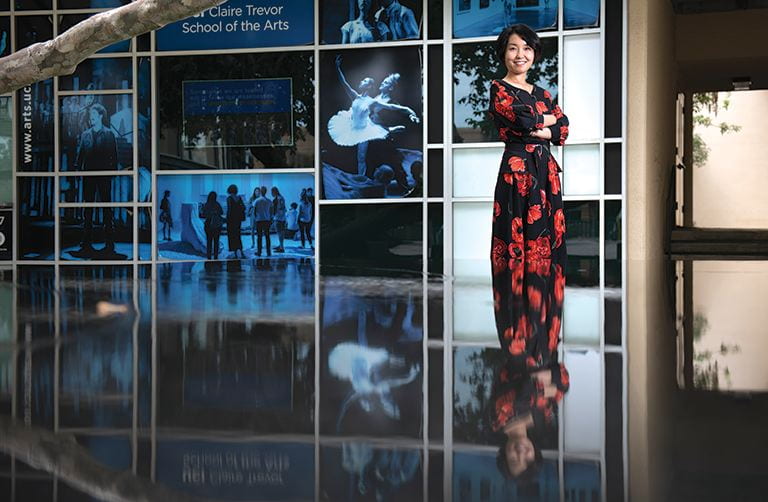
Since enrolling at UCI in 2018, doctoral student Qianru Li has straddled the roles of researcher, documentarian, archivist and writer.
“I want to be someone whose work is always in between, in that space between being a scholar, intellectual, activist and artist. That’s the someone I want to become,” Li says. “As an international student and first-generation immigrant, I want to understand who I am in this country. That’s how I got to my project of trying to articulate, in a relational way, the formation of Chinese American identity.”
Li is using a Medici Circle scholarship in an ongoing project to document the lives of elderly, local Chinese Americans.
“I ask them about their experiences with migration and also the challenges they’ve faced, both long ago and today,” Li says. “After a year and a half of lockdown, a lot of the seniors feel very isolated, especially ones with language barriers. One of them told me, ‘I feel like I’ve aged 20 years here, because there’s no one to talk to.’
“For me, talking with them has taught me to be less categorical about things, to realize that things can be bad and good at the same time – how people can live under oppression, face tremendous struggles and still be trying their best, so that they can believe tomorrow still matters.”
Though trained as a playwright at the Shanghai Theatre Academy, Li hasn’t been writing plays lately.
“I will one day,” Li says. “Being with these seniors is something very close to my heart and has changed my thinking about different ways of storytelling. But it has also made me feel that I don’t understand life and the world enough to do that yet.”
Andrea Ordaz ’15, M.F.A. ’19 | Dance
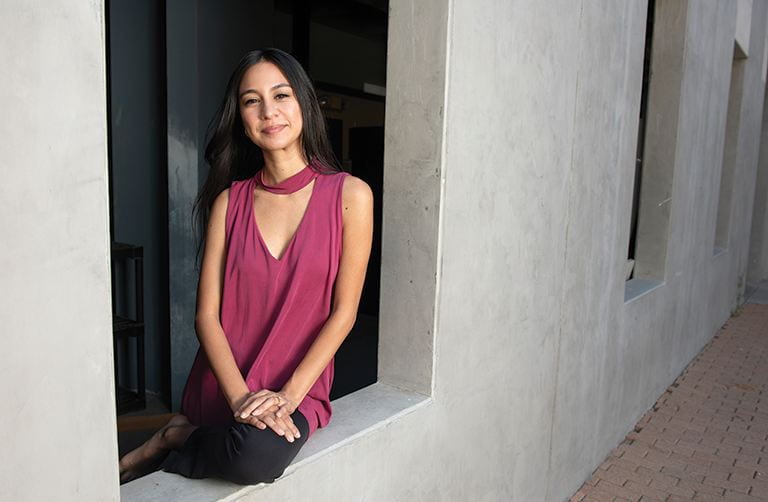
Though of limited means, Andrea Ordaz’ parents managed to provide dance lessons for her as a child. Years of enthusiasm and training – in ballet and other Eurocentric modes – led her to a UCI B.A. in dance.
“Then I returned to get my M.F.A. because I felt there was something missing,” she says. “When you’re first-generation, your world is different. I wasn’t seeing many people on stages who looked like me or seeing works that I could relate to. There wasn’t anything that felt like me, and I decided the only way I’d experience something that did was to make it myself. If you want to change things, sometimes you have to start with yourself.”
Ordaz says the M.F.A. program crystallized her artistic identity. “It helped me to feel what it means to be a dancer and choreographer within my own culture and ethnicity – and to make sense of my own art.”
The result was her thesis, “Mexican-American Female
Identity in Choreographic Process,” and its accompanying dance piece, “Agave Americana,” which debuted at the Claire Trevor Theatre in April 2019.
Since then, she formed A.Ordaz Dance, in Los Angeles. She also serves on the faculty of The Wooden Floor, a Santa Ana nonprofit that helps underserved youths have agency over their bodies, minds and futures via a 10-year program of dance lessons, college prep and other training.
To Ordaz, it isn’t always grand projects that create change. “I see it in taking the skills I learned at UCI and being able to share them with students, to help them determine their life’s path,” she says. “I see it in getting individuals in an audience to react, to feel more of what it is to be human. I believe that’s where change in people can come from.”
